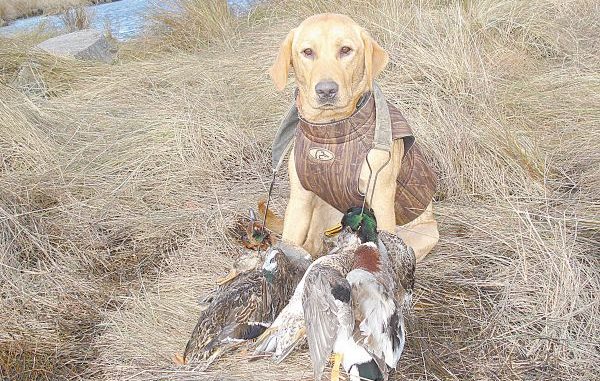
Don’t wait until last minute, trainer says
You’ve been pumped up for months on end — really since the last season ended. The boat or ATV is ready, and the credit card statement has a laundry list of purchases of all the must-haves bought during the offseason.
Everything is set for you to be outfitted to the T as that first flock descends upon your spread next month.
But following the boom and resultant splash, is your four-legged buddy ready all the same? Hopefully by this time you’ve stirred the family retriever from an offseason of lounging, but if not there’s still time to get them in tiptop shape prior to opening day.
Mark Smith, of South Lake Kennels in Laplace, has been training retrievers since 1982 and has developed an extensive list of champion dogs along the way. Brother of renowned Delacroix area duck guide Mike Smith, hiss passion lies in getting your retriever hunt-ready to maximize enjoyment in the blind.
Though many hunters use teal season as an opportunity to shake off the rust, very few retrievers get that mulligan. Alligators are prevalent in the vast majority of our waterways, so Smith does not recommend putting dogs at risk.
That means it’s incumbent upon the dog’s handler to take time to get the dog ready for November’s regular-season kickoff.
“The first thing to do this time of year is to get your dog in shape,” Smith said. “Most (of the dogs) that come to me for a preseason tune-up are overweight, so I immediately cut back on their food and start getting them in shape.”
Smith emphasized taking a slow approach when it comes to getting back to the rigors of retrieving, as this process can’t be done overnight.
“It’d be nice if everyone would work their dogs year round, but it’s just not the case in most instances,” he said.
According to Smith, getting a dog into top form, both physically and mentally, can take up to two months. Nevertheless, slowly working a dog back into shape must be done carefully, letting the dog’s demeanor dictate the pace to prevent overstressing the animal.
As the dog starts to get his legs back under him, Smith advises starting with the fundamentals.
“I like to run some blinds to see how bad the rust is,” Smith said. “After being laid up in the offseason, most dogs have slow sits on the whistle and tend to not cast very well. Some dogs may exhibit some ‘popping’ or anticipating the next command.”
Smith said training points like steadying, hand signals and other basic commands are the foundation of the retriever’s training, and should be mastered before moving on to brushing up more complex commands.
“I’ll touch on some collar conditioning, and some basic force on back to deal with the problems you are trying to solve in what’s typically a short amount of time,” Smith said. “Unfortunately everyone waits to the last minute and wants their dog to be in midseason form but it’s just not a realistic expectation; some dogs are a mess and need a lot of work.”
Smith noted that, if possible, it’s ideal to work with the dog in the type of scenario in which you routinely hunt, be it out of a boat, dog stand or pit blind. It’s critical to get the dog back into the swing of coming and going from the blind, as well as dealing with gunfire.
“I try to incorporate a reasonable amount of marked retrieves with shooting over the dog to check out their steadiness.”
Although the training often ends as the season kicks off, Smith also recommended attention to the dog’s nutritional demands once the action is underway.
“With hard hunting, the dogs can lose a lot of weight quickly, so it’s critical to feed them a high-quality dog food to maintain the dog’s health during the rigors of the season,” Smith said.


